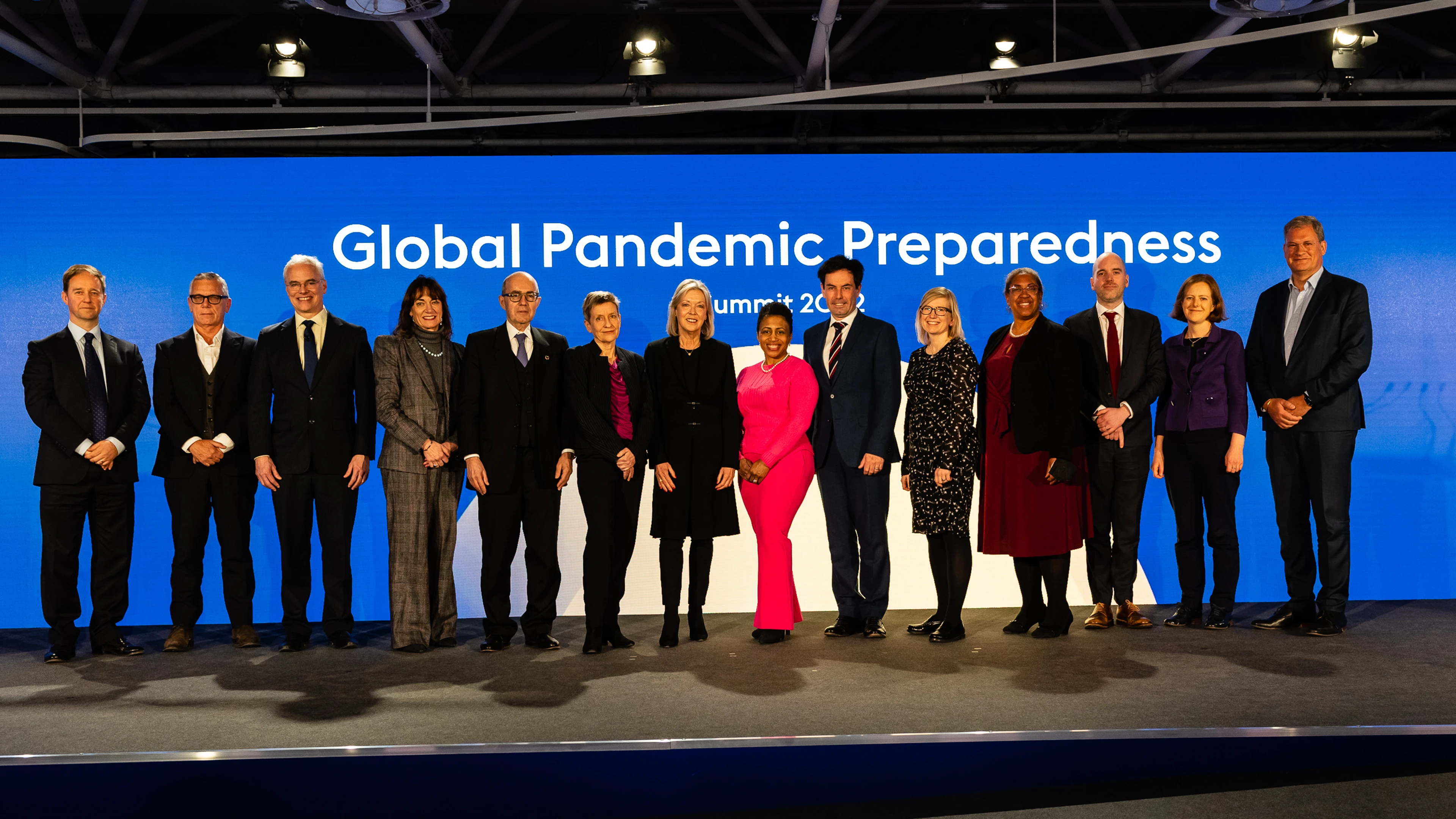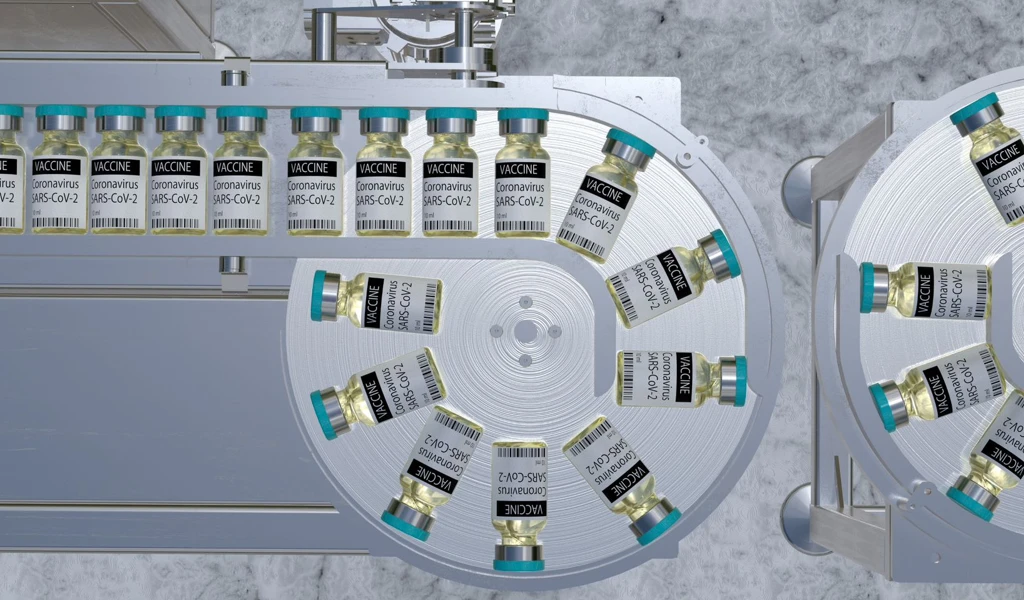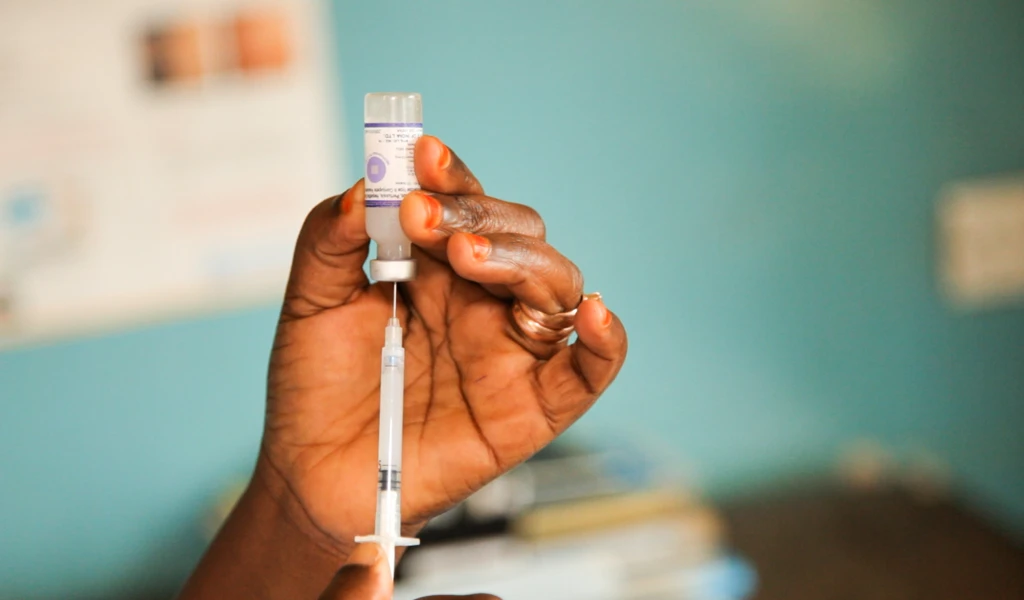The Global Pandemic Preparedness Summit: On the road to 100-Day vaccines
Faster vaccine development and more equitable access will be essential in heading off future pandemics. While the past two years of battling COVID-19 have showcased remarkable scientific advances, there are still major challenges to overcome—and the risk of political determination seeping away is real.
International policymakers, scientists, and representatives of industry, philanthropy and civil society were united at the Global Pandemic Preparedness Summit—co-hosted in London by the Coalition for Epidemic Preparedness Innovations (CEPI) and the UK Government on March 7-8, 2022—in endorsing the ambition to have safe, effective, and globally accessible vaccines against the next pandemic threat ready in just 100 days.
But the devil will be in the detail in realizing this goal—from raising the US$3.5 billion required by CEPI to deliver on its pandemic-busting plan over the next five years, to realigning global regulatory systems, to scaling up manufacturing and ensuring supplies of everything down to rubber stoppers for vials.
What is not in doubt is the fact that the world will face more deadly disease outbreaks with the potential to wreak havoc on lives and livelihoods in the years ahead.
The fact that humanity has just been through one pandemic does not reduce the risk of our being hit by another unknown pathogen—a so-called Disease X.
THE URGENCY OF NOW: PLANNING FOR THE NEXT DISEASE X
"COVID-19 will not be the last Disease X. Epidemics and pandemics are a fact of nature, exacerbated in our time by urbanization, encroachment on habitats, the climate crisis, and insecurity," Dr Tedros Adhanom Ghebreyesus, Director General of the World Health Organization, told the Summit.
COVID-19 is already the second pandemic and seventh global infectious disease crisis since the turn of the century, following on the heels of SARS, avian influenza, swine flu, MERS, Ebola and Zika.
Estimates of cumulative excess deaths in the current pandemic range from 14 million to 24 million people — almost identical to the death toll in World War I — while the economic cost by the end of 2025 is put at $28 trillion.
Worryingly, future disease outbreaks could be even worse. SARS-CoV-1 and MERS-CoV, for example, have higher fatality rates, making them approximately 5 to 16 times worse than SARS-CoV-2—and the only thing that stopped these viruses causing a catastrophe was that they were less easily transmitted.
The good news is that the global community now has a blueprint to get ahead of future disease outbreaks in the form of the 100 Days Mission, which aims to shorten the period between viral sequencing of a new pathogen threat and the emergency authorization of vaccines within just over three months.
GETTING TO 100 DAYS: CEPI'S MOONSHOT
This "moonshot" goal, set out by CEPI and endorsed by the G7 and G20, would give the world a fighting chance of containing future outbreaks near to the source and pre-empting their spread around the globe.
The 100-day aspiration compares with the 326 days taken to bring the first COVID-19 vaccine into emergency use, which was itself a quantum leap from the previous vaccine-development record of nearly five years.
But achieving this will require new thinking, experts agreed at the Summit. This includes building a library of "prototype vaccines" against the 25 families of viruses known to infect humans; innovating the development and manufacturing processes; and continuously reviewing evidence to support rapid approval by regulators.
Spotting potential threats earlier through enhanced global surveillance of both genomic and disease data will also be crucial, requiring new systems to pool and rapidly share information.
GLOBAL POLITICAL AND FINANCIAL COMMITMENTS TO MEET A GLOBAL CHALLENGE
It is "a giant jigsaw puzzle" of interlocking challenges, according to Dr Melanie Saville, CEPI's Executive Director of Vaccine Research & Development, and delivering all the components will take major investment, as well as continuing political commitment from governments.
This is of course difficult a time of mounting threats elsewhere, from war in Ukraine to the climate crisis.
Some global health experts warn there may be a cycle of complacency and neglect as perceptions that COVID-19 is receding cause attention to shift away from the risk of future pandemics. They point to a similar loss of momentum when previous outbreaks like Zika and SARS faded from the news.
As a result, Sir Jeremy Farrar, Director of the Wellcome Trust, believes it may prove "extraordinarily difficult" to get the necessary commitment from governments and to ensure political leaders remain focused on the problem.
"Without political will, this will not happen. It's a political choice," he said. "If you don't learn lessons and change what you are doing, you will repeat the same mistakes again…people's memories are, I'm afraid, incredibly short."
This is why it is significant that the UK Government and representatives of the life sciences industry joined CEPI to issue a landmark statement at the Summit, outlining their collective commitment to delivering on the 100 Days Mission, working towards preventing future pandemics before they even start.

Life sciences industry commit to delivering on the 100 Days Mission
In the words of Dr Seth Berkley, CEO of Gavi, the Vaccine Alliance, the global community needs to come together to "invest in peacetime, not just in wartime".
Even with adequate funding, realizing the different elements of the 100-day plan will not be simple.
As Sir Patrick Vallance, the UK Government Chief Scientific Adviser, said: "The ability to get the appropriate platform technology supported, the ability to get the building blocks in place, and the work in place so that we can be agile in response to whatever hits humanity next—is crucially important."
PREPARE, TRANSFORM, CONNECT
In the case of COVID-19, vaccine developers were fortunate to have a jump-start because they were already working on shots for MERS, another coronavirus. That happy coincidence may not be repeated next time.
So, if the world is to go from "lab to jab" even faster in the future, there will need to be a lot more preparatory work and it will have to range across all the virus families to work out the best vaccine approach in each case. By analyzing multiple pathogens in this way and gathering clinical data on safety and immune responses well in advance, only minor changes should be needed to develop the relevant prototype vaccine when the next Disease X arrives.
But designing a vaccine is only one step. Accelerated vaccine delivery will also demand a revamp of the traditional chronological approach to both regulatory approval processes and manufacturing priorities.

Professor Dame Sarah Gilbert speaking at the Summit
"The goal of having vaccines ready for use within 100 days in future does not allow for vaccines to be tested for safety and efficacy in Phase III trials as they were in 2020 but will require a different approach to approvals for emergency use which is yet to be established," said Professor Dame Sarah Gilbert of the University of Oxford.
In practice, this will most likely involve regulators clearing the use of vaccines for high-risk groups based on early predictors of efficacy, while large-scale clinical trials continue. The urgency of addressing a dire situation will need to be balanced with reassurance on safety—an important consideration given the vaccine hesitancy evident in some communities.
BOOSTING VACCINE MANUFACTURING
In manufacturing, experts at the Summit were unanimous that the goal should be distributed production in different regions, with the aim of establishing a global network of factories that can be switched to pandemic-vaccine output when the need arises.
This will require substantial upfront investment to avoid the kind of production bottlenecks experienced during the COVID-19 pandemic—as exemplified at Moderna, the U.S. biotechnology company whose pioneering mRNA vaccine was among the first to reach the market in 2020. "When we had the vaccine authorized it was a great day. But it was also a very sad day because we only had 20 million doses to share," said Stephane Bancel, CEO of Moderna.
Without adequate supply—particularly in low-income and middle-income countries—scarce supplies can fuel vaccine nationalism and exacerbate inequality. This is already evident across Africa, where 83% of the population has yet to receive a single dose of COVID-19 vaccine.
Work is now underway to boost vaccine capacity in under-served parts of world, through initiatives such as the WHO's mRNA vaccine technology transfer hub. Moderna's new Global Health Strategy, announced at the Summit, also includes the establishment of its first mRNA manufacturing facility in Kenya, alongside a commitment to advance vaccines targeting 15 pathogens into clinical studies by 2025.

Stephane Bancel and Dr Melanie Saville speaking at the Summit
And African countries are on a major drive to cut reliance on vaccine imports, with the Africa Centres for Disease Control and Prevention aiming to have 60% of shots manufactured on the continent by 2040. The Summit also saw Aspen Pharmacare announce a new landmark agreement with Johnson & Johnson to manufacture and make a COVID-19 vaccine available throughout Africa.
Similarly, production of the many consumables used in vaccine manufacturing—from syringes and glass vials to lipid nanoparticles—also need to be distributed and diversified to maximize rapid scale-up.
But while large-scale distributed manufacturing is essential for globally accessible vaccine deployment, industry officials stressed that production also needed to be financially sustainable during non-pandemic times, when demand is low. That means finding long-term funding solutions and viable business models that will see vaccine manufacturers through times of potential over-capacity.
There is much to do. Yet Dr Richard Hatchett, CEO of CEPI, is convinced the vaccine ecosystem can be engineered to deliver on the 100-day ambition.
"Some have described this as a ‘moonshot' mission—because the goal, while ambitious, is now technologically within reach," he said.
"But there is an important difference. When we went to the moon, it was exciting. It was a triumph. But it wasn't essential. Being able to respond to the next Disease X with new vaccines and other countermeasures in just 100 days is absolutely essential."
Full Summit proceedings available on CEPI's Vimeo channel.
Read CEPI's investment case here.
Learn more about the 100 Days Mission here.


